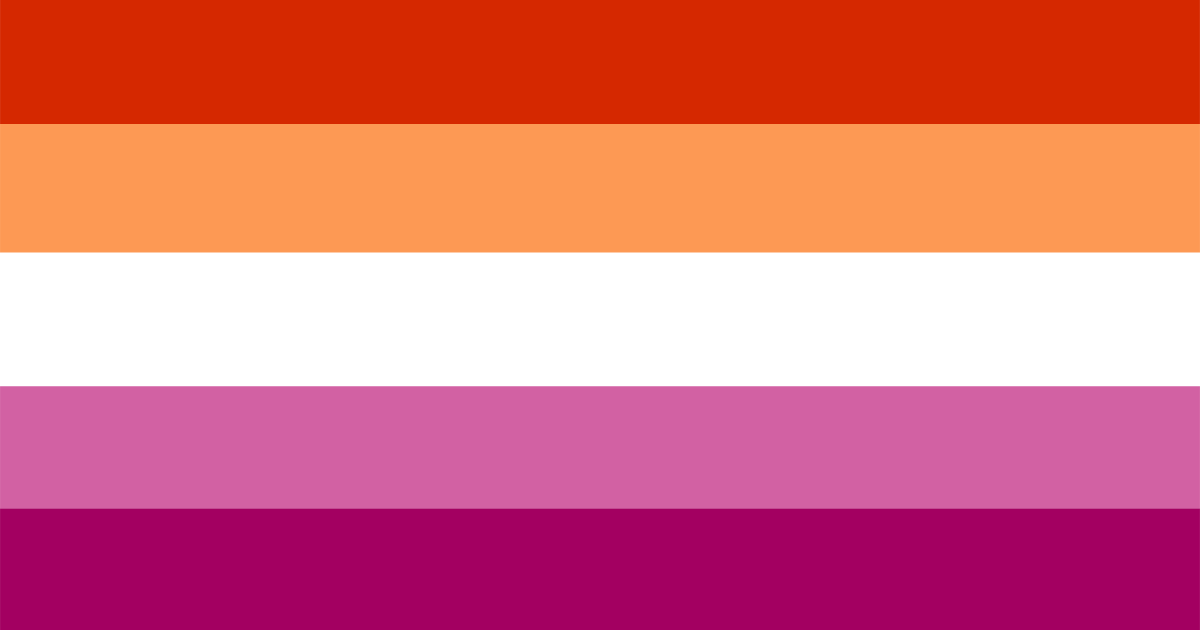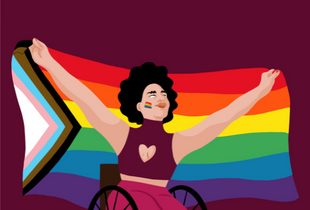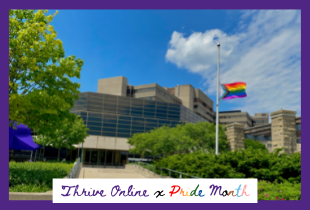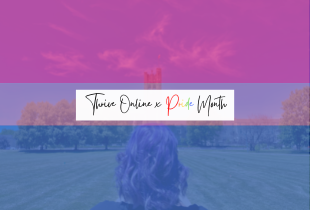International Lesbian Day: Learning About Lesbian Culture
 Written by: M. Bettencourt, 5th Year History
Written by: M. Bettencourt, 5th Year History
*The Lesbian flag used in this photo was designed by Emily Gwen
Today, October 8th, is International Lesbian Day—a day for celebration, visibility, and remembrance. The lesbian community has a very long history, and there is no better day than today to discuss the symbols used by the community. Below I list and explain the history behind important symbols in the lesbian community.
1. 7-Stripe Lesbian Flag
In 2018, Tumblr-user Emily Gwen released her design for a new lesbian flag. The 7 stripes each hold a different meaning. Dark orange for gender non-conformity, orange for independence, light orange for community, white for unique relationships to womanhood, pink for serenity and peace, dusty pink for love and sex, and dark rose for femininity. You can read Emily’s post here.
2. Labrys
This double-headed axe was adopted as a lesbian symbol in the 1970s. The labrys dates back to ancient Greece—specifically Crete—where it was notably not a weapon and was associated with goddesses, particularly Artemis and Demeter. The double-headed axe was also associated with the Amazons. Today, it is a symbol of power, strength, and self-sufficiency in the lesbian community.
3. Double Venus
Popularized in the 70s, this symbol interlocks the Venus symbol—sometimes used to represent the female sex—thus creating an iconic symbol of lesbianism.
4. Nautical Star
Beginning in the 40s and 50s, bar-going lesbians would get this symbol tattooed on their wrists. To quote Madeline Davis and Elizabeth Kennedy’s Award-winning 1993 book, Boots of Leather, Slippers of Gold: The History of a Lesbian Community, “During this time period, the cultural push to be identified as lesbians—or at least different—all the time was so powerful that it generated a new form of identification among the tough bar lesbians: a star tattoo on the top of the wrist, which was usually covered by a watch. This was the first symbol of community identity that did not rely on butch-fem imagery. ... The mark has become something of a tradition in local circles and has seen a revival since the 1970s.” It is also important to note that lesbianism was not legally or generally societally accepted—which was partially why the tattoos were meant to be obscured by wristwatches or bracelets; the symbol identified lesbians to other lesbians but could be covered for safety. To read more on this, Davis and Kennedy’s book is available at the university library.
5. Violets
The use of these flowers as a symbol for lesbianism dates back to Sappho, the Greek poet from whom the word ‘sapphic’ is derived. Sappho would often include mention of violets in her writing—alongside mentions of love and passion. In 1926, Edouard Bourdet wrote The Captive, wherein the female lead is a lesbian. The gift of violets in the play further cemented violets as a symbol of lesbianism—some even pinned the flowers to their lapels and belts to show solidarity.
6. Black triangle
The use of the black triangle as a symbol for lesbians is highly contentious. It was used by Nazis to mark those deemed asocial or political prisoners. While lesbianism was not officially criminalized by the Nazi regime, some lesbians were persecuted under other laws and were marked with the black triangle. In recent decades, there has been a push to reclaim the black triangle for lesbian pride and solidarity (similarly the use of pink triangles for gay pride). However, this practice is debated as it may be seen as trivializing or diminishing the systematic cruelty and suffering of the victims of the Nazi regime. To read more on this, here are links to the American Holocaust Memorial Museum and Dr. Amy Elman’s article on the ‘Politics of Nazi Symbols.’
Learn more about the LGBT2Q+ community by reading more blogs!

Recalling and Recognizing: Celebrating LGBT2Q+ History Month
Learn more about the origin and importance of LGBT2Q+ History Month.

Pride Month 2021: Public Figures and Advocates of the 2SLGBTQ+ Community
Check out this list of 2SLGBTQ+ advocates from history and the present day.

Coming Out: My Journey to Find Who I Am
Coming out is different for every queer person, but here's one student's experience.
Published on

